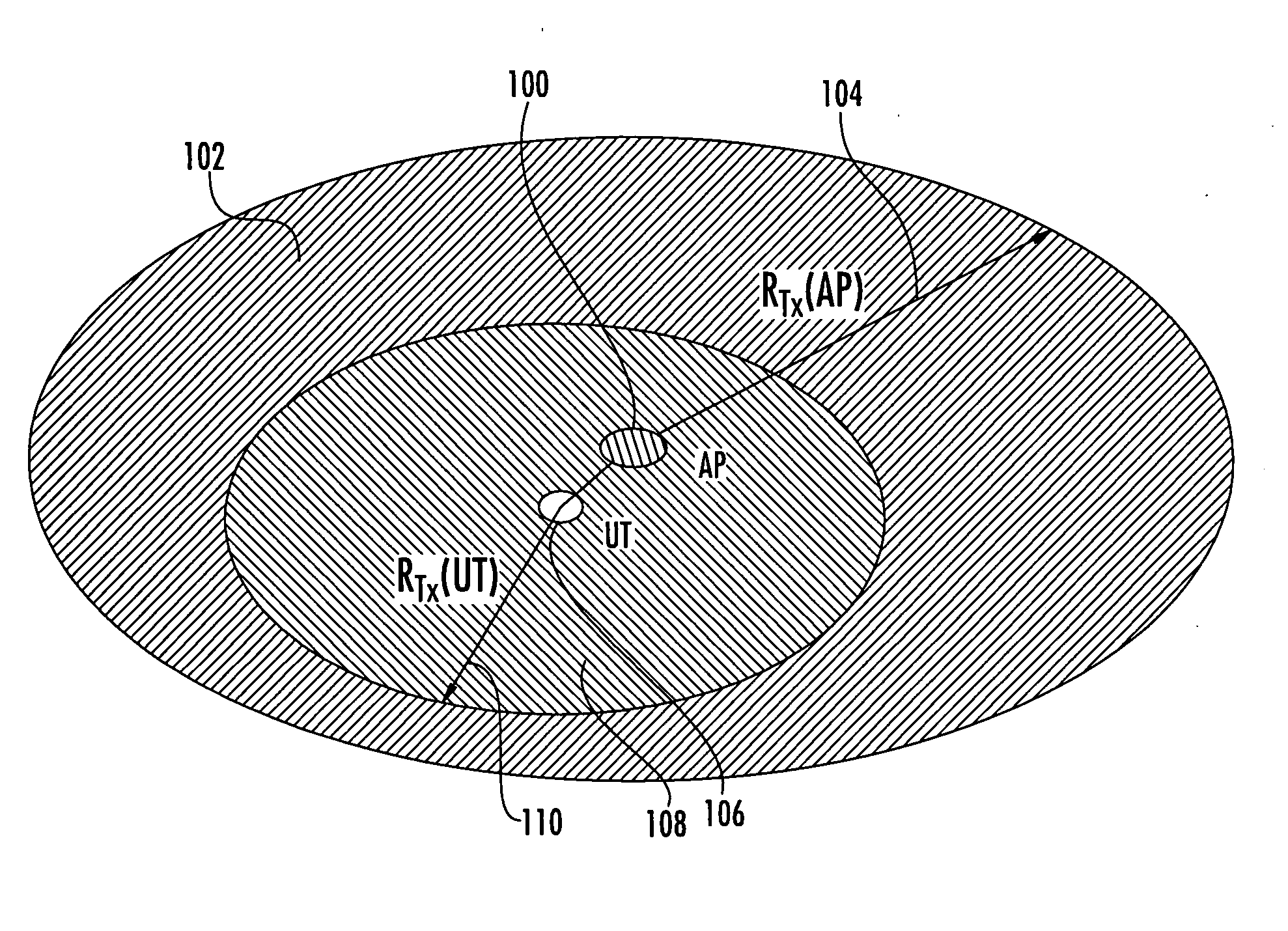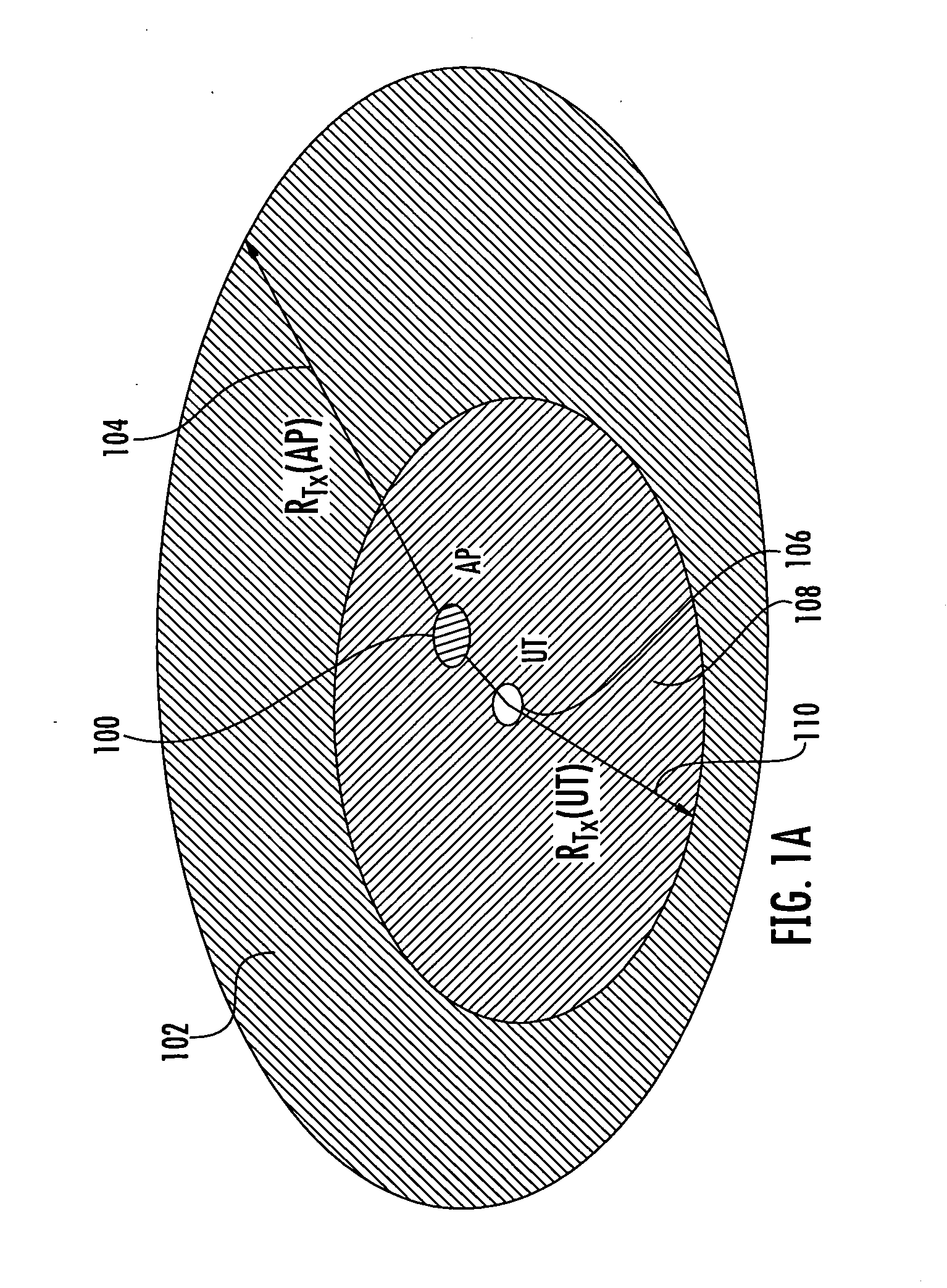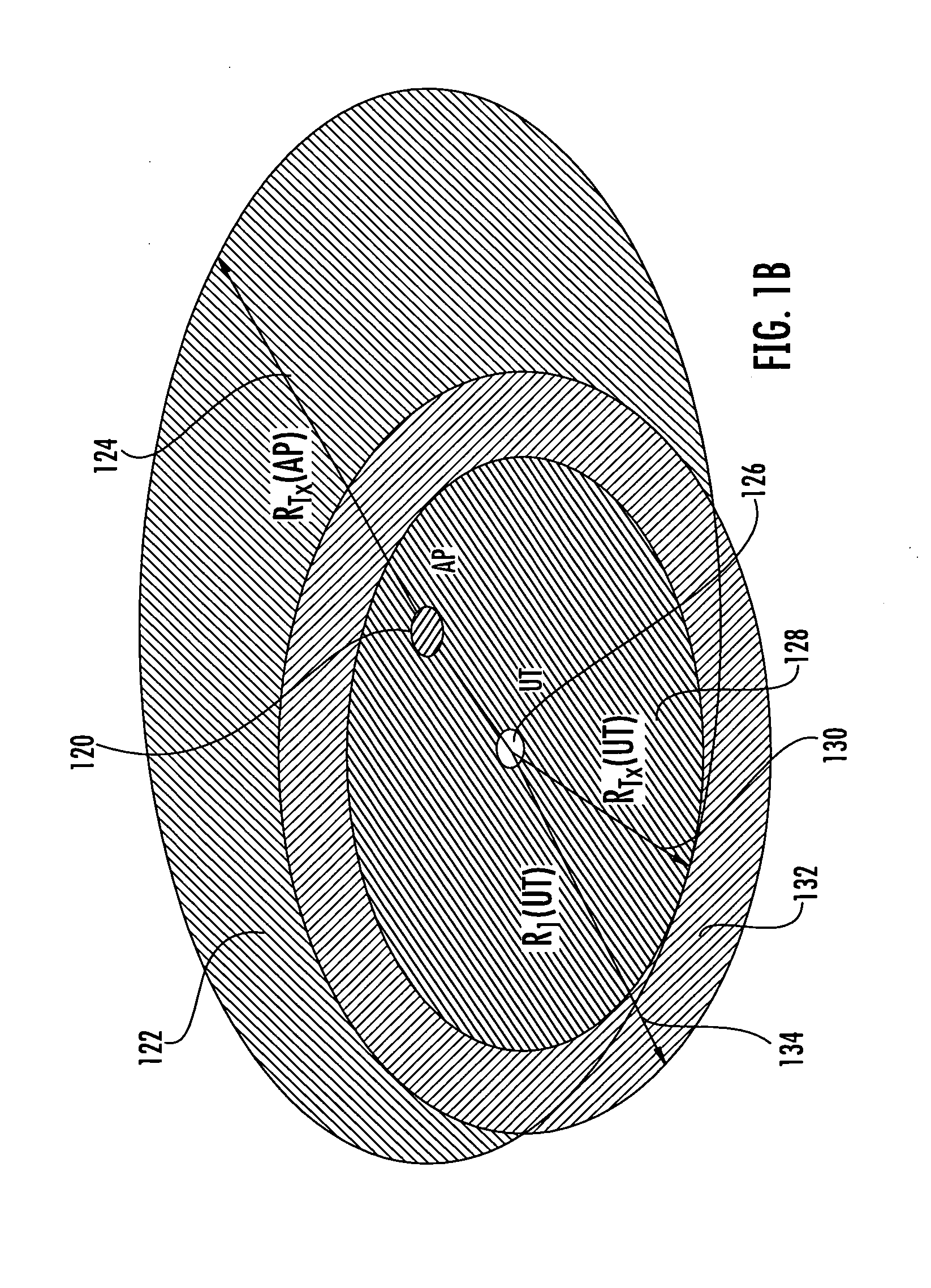Centralized cross-layer enhanced method and apparatus for interference mitigation in a wireless network
a wireless network and cross-layer enhancement technology, applied in the direction of transmission monitoring, orthogonal multiplex, receiver monitoring, etc., can solve the problems of increasing the interference level of the wireless network, affecting the overall network deployment cost, and more random and time-varying radio communication channels, so as to improve the throughput and capacity of the wireless communications network, avoid or reduce the effect of co-channel interferen
- Summary
- Abstract
- Description
- Claims
- Application Information
AI Technical Summary
Benefits of technology
Problems solved by technology
Method used
Image
Examples
Embodiment Construction
[0039]Introduction: Co-channel interference is an important factor in determining the overall performance of a wireless network. In particular coverage, capacity, spectral efficiency, and throughput of a wireless network can be adversely degraded in presence of co-channel interferers, if the effect of interference is not properly addressed in the network design. Examples of the sources of co-channel interference in a cellular network include other users in the same cell, other cells, as well as, unintended and uncoordinated interferers. Many types of cellular networks and in particular WLAN, WMAN and WWAN share the same design challenge in that they are formed of many radio access points or base stations (depending on the network type, numbering from a few to hundreds and even thousands of transmitters in a network), each addressing a relatively small area, in order to provide coverage for larger areas. To address the inter-cell co-channel interference problem spatial / frequency doma...
PUM
 Login to View More
Login to View More Abstract
Description
Claims
Application Information
 Login to View More
Login to View More - R&D
- Intellectual Property
- Life Sciences
- Materials
- Tech Scout
- Unparalleled Data Quality
- Higher Quality Content
- 60% Fewer Hallucinations
Browse by: Latest US Patents, China's latest patents, Technical Efficacy Thesaurus, Application Domain, Technology Topic, Popular Technical Reports.
© 2025 PatSnap. All rights reserved.Legal|Privacy policy|Modern Slavery Act Transparency Statement|Sitemap|About US| Contact US: help@patsnap.com



